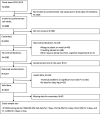Association of physical activity, sedentary behaviour, and daylight exposure with sleep in an ageing population: findings from the Whitehall accelerometer sub-study
- PMID: 36494722
- PMCID: PMC9733167
- DOI: 10.1186/s12966-022-01391-0
Association of physical activity, sedentary behaviour, and daylight exposure with sleep in an ageing population: findings from the Whitehall accelerometer sub-study
Abstract
Background: Ageing is accompanied by changes in sleep, while poor sleep is suggested as a risk factor for several health outcomes. Non-pharmacological approaches have been proposed to improve sleep in elderly; their impact remains to be investigated. The aim of this study was to examine the independent day-to-day associations of physical behaviours and daylight exposure with sleep characteristics among older adults.
Methods: Data were drawn from 3942 participants (age range: 60-83 years; 27% women) from the Whitehall II accelerometer sub-study. Day-to-day associations of objectively-assessed daytime physical behaviours (sedentary behaviour, light-intensity physical activity (LIPA), moderate-to-vigorous physical activity (MVPA), mean acceleration, physical activity chronotype) and daylight exposure (proportion of waking window with light exposure > 1000 lx and light chronotype) with sleep characteristics were examined using mixed models.
Results: A 10%-increase in proportion of the waking period spent sedentary was associated with 5.12-minute (4.31, 5.92) later sleep onset and 1.76-minute shorter sleep duration (95%confidence interval: 0.86, 2.66). Similar increases in LIPA and MVPA were associated with 6.69 (5.67, 7.71) and 4.15 (2.49, 5.81) earlier sleep onset respectively and around 2-minute longer sleep duration (2.02 (0.87, 3.17) and 2.23 (0.36, 4.11), respectively), although the association was attenuated for MVPA after adjustment for daylight exposure (1.11 (- 0.84, 3.06)). A 3-hour later physical activity chronotype was associated with a 4.79-minute later sleep onset (4.15, 5.43) and 2.73-minute shorter sleep duration (1.99, 3.47). A 10%-increase in proportion of waking period exposed to light> 1000 lx was associated with 1.36-minute longer sleep (0.69, 2.03), independently from mean acceleration. Associations found for sleep duration were also evident for duration of the sleep windows with slightly larger effect size (for example, 3.60 (2.37, 4.82) minutes for 10%-increase in LIPA), resulting in associations with sleep efficiency in the opposite direction (for example, - 0.29% (- 0.42, - 0.16) for 10%-increase in LIPA). Overall, associations were stronger for women than for men.
Conclusions: In this study, higher levels of physical activity and daylight exposure were associated with slightly longer sleep in older adults. Given the small effect sizes of the associations, increased physical activity and daylight exposure might not be enough to improve sleep.
Keywords: Accelerometer; Daylight exposure; Older adults; Physical activity; Sedentary time; Sleep.
© 2022. The Author(s).
Conflict of interest statement
The authors declare that they have no competing interests
Figures



References
MeSH terms
Grants and funding
LinkOut - more resources
Full Text Sources
Medical

